Joyzis BR300 300W portable power station
Two-minute review
A small portable power station that is as big as a six pack of beer is very useful. It is small enough to be carried around effortlessly and will generally cost less than a bigger version. You could easily misplace it without losing sleep. Other advantages that come from a smaller power station on top of taking less space are faster charging times and quietness.
Joyzis is one of the lesser known brands that tries to fill the niche of lightweight power stations. Their online shop currently shows two models, a 150Wh and a 296Wh priced at $180 and $250 respectively. The BR300 is the 296Wh version and offers a good balance of functionality, output power and autonomy.
Joyzis has been able to pack different output sockets in a small volume to increase the utility of the BR300. This includes four USB ports, a 10W Wireless Charge area, a 12V car cigar lighter and one 300W AC output. Finally, a pair of flashlights are included to allow usage in case of a road emergency or blackout.
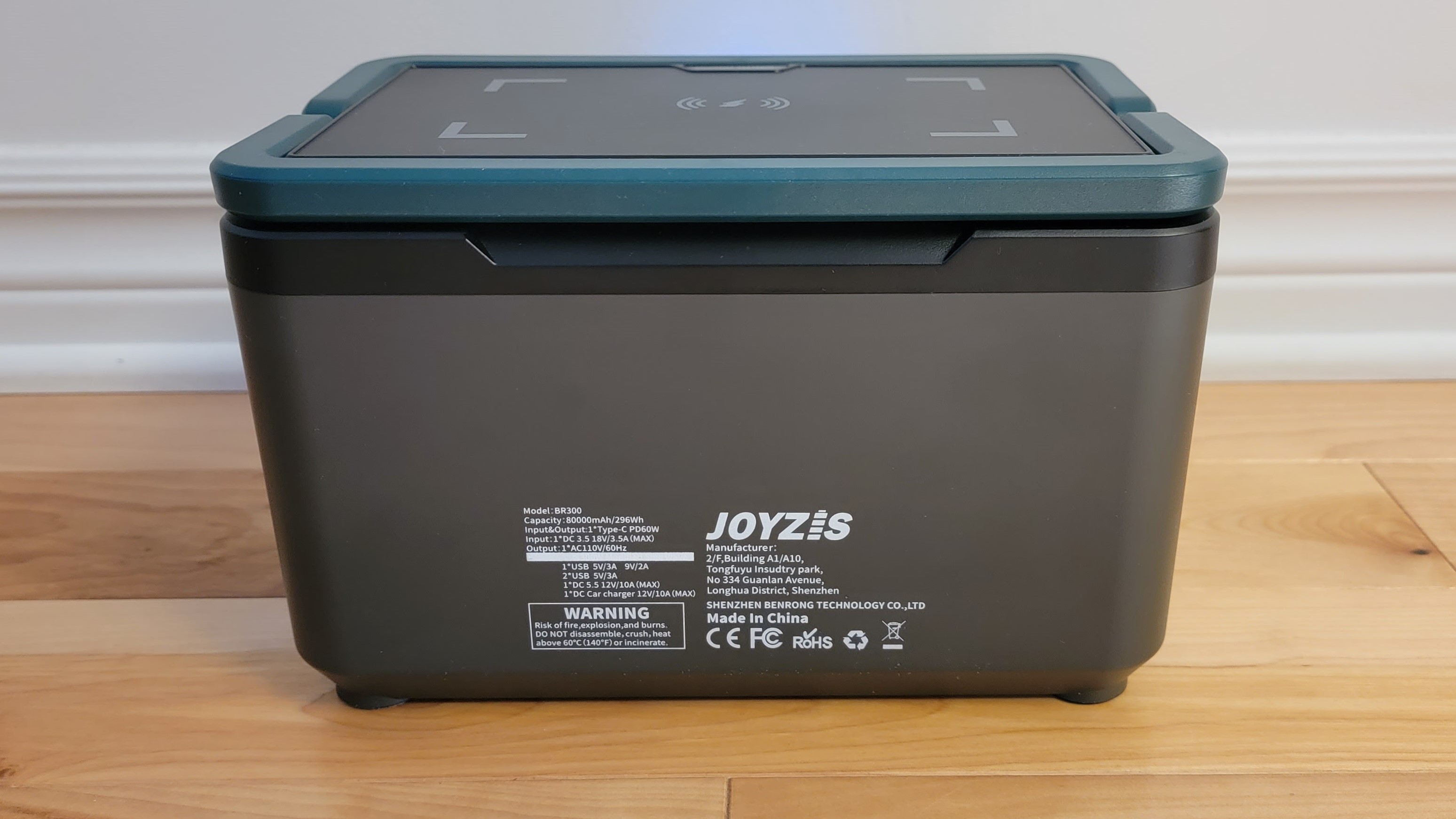
Design
The BR300 measures 22.5 x 14 x 14.5cm and weighs 1.95kg. It has two foldable handles that can be stored in a flat position when unused. The gray plastic case has round corners and feels solid with four small rubber pads located on the bottom. Any pull on wires connected to the unit will not result in the station tipping over.
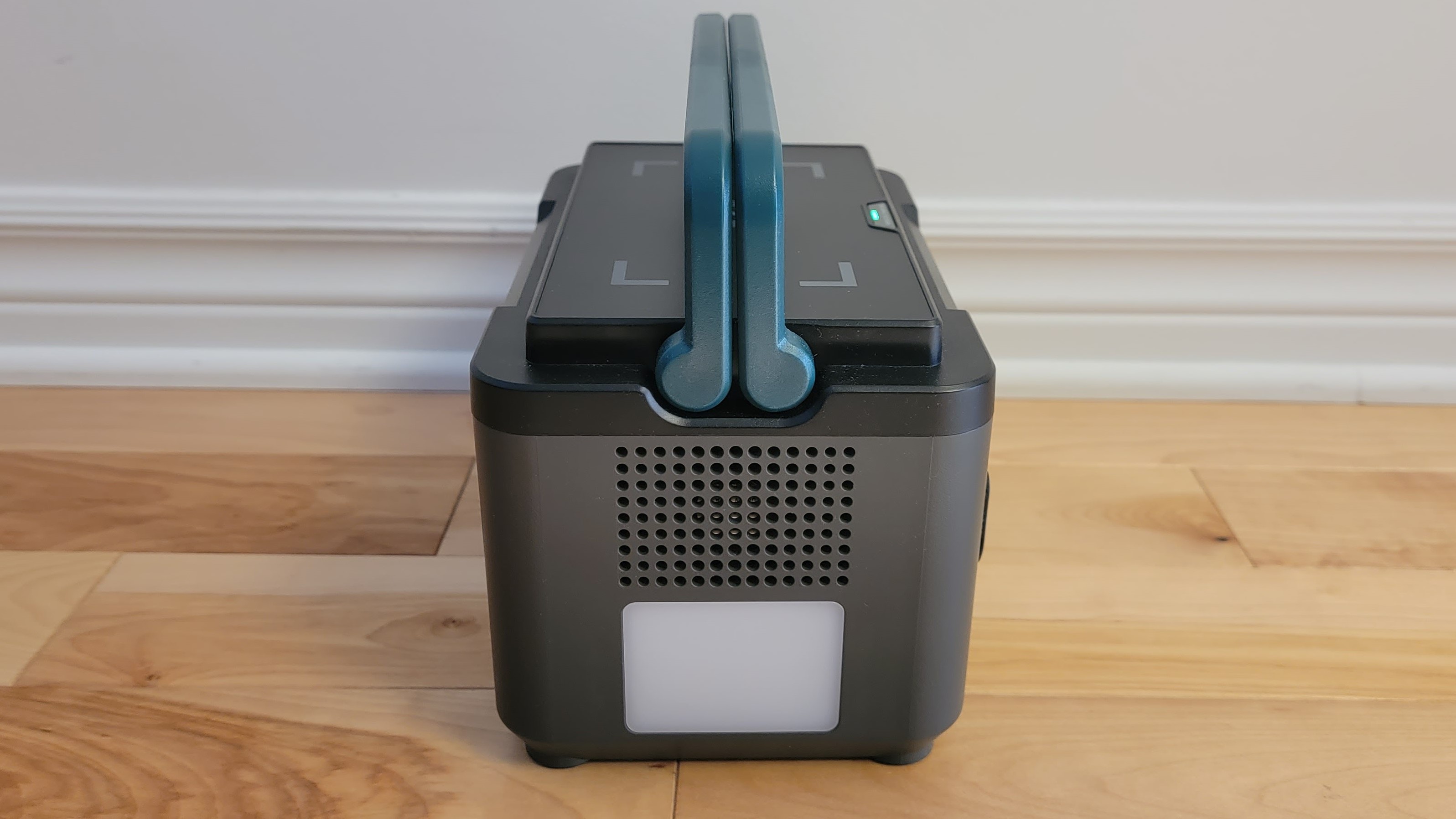
Two fans located on each side provide adequate airflow to cool the AC inverter and charge circuitry while in use.
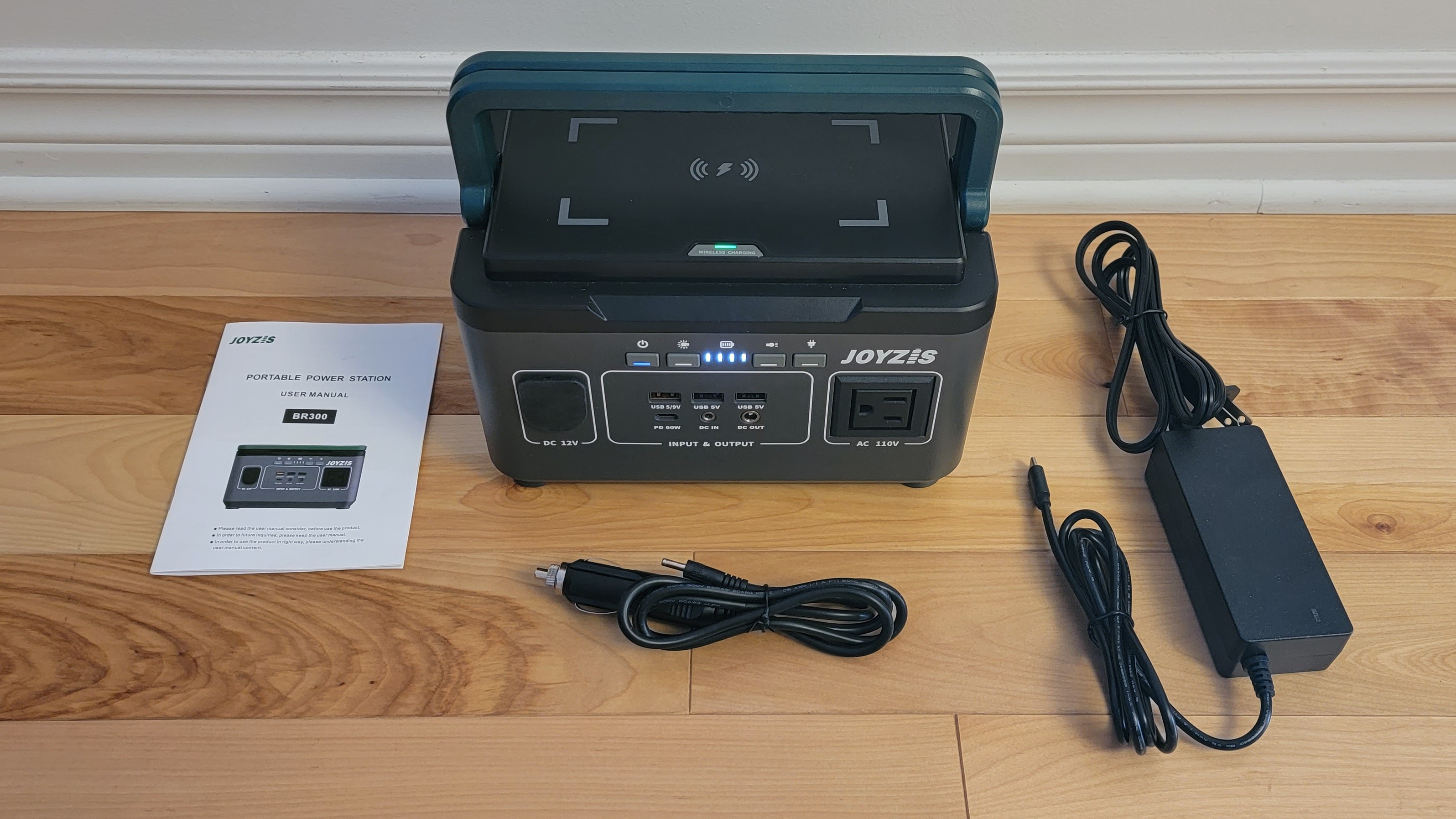
Accessories found in the power station’s box are the user manual, a 60W AC adapter with a Type-C output and a car charger cable. The BR300 is based on the older Lithium-Ion chemistry and should provide at least 500 charge cycles. As with all Li-Ion based stations, it is recommended to fully charge the station before first using it. Joyzis offers a two year warranty when the owner signs-up on their website and comes with one year by default.
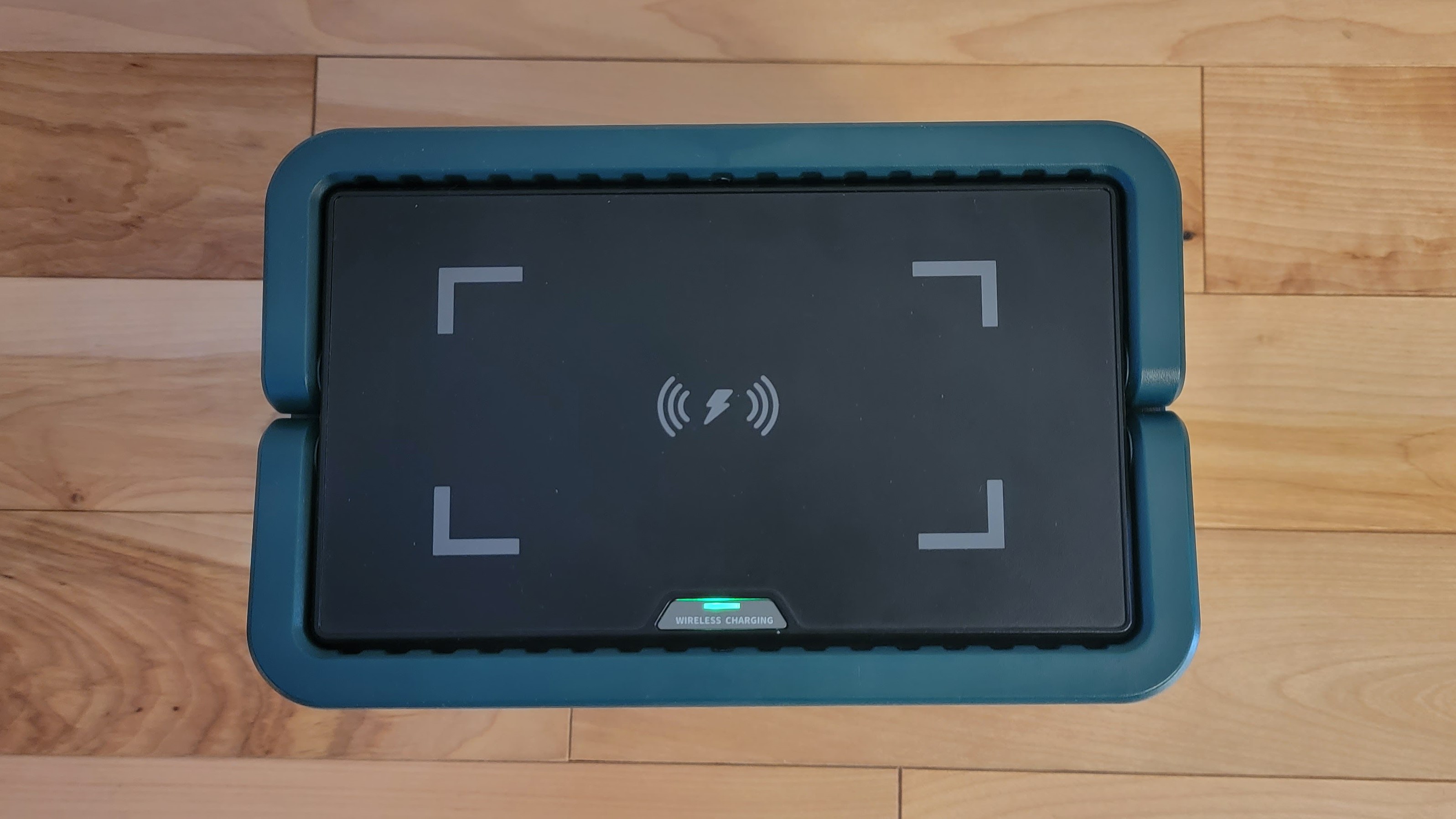
The user interface is one of the simplest around. A group of four buttons with built-in LEDs allows turning on and off the unit and DC section, AC section and flashlights. An additional switch on the top enables wireless charging. Four white LEDs located in the same row as the push buttons indicate the battery level at all times both while charging and discharging.

The BR300 front panel is divided into three output sections. To the left is a regulated DC 12V car output socket capable of 10A. The center contains the most commonly used sockets. Three USB Type-A including one 18W QC provides up to 48W and a single 60W Type-C supporting PD. In addition, two barrel sockets are present for DC input and output. The input can charge the unit at 18V/63W while the output provides 12V at 120W. Finally, the AC section located on the right has a single three-pronged socket supporting a maximum of 300W.
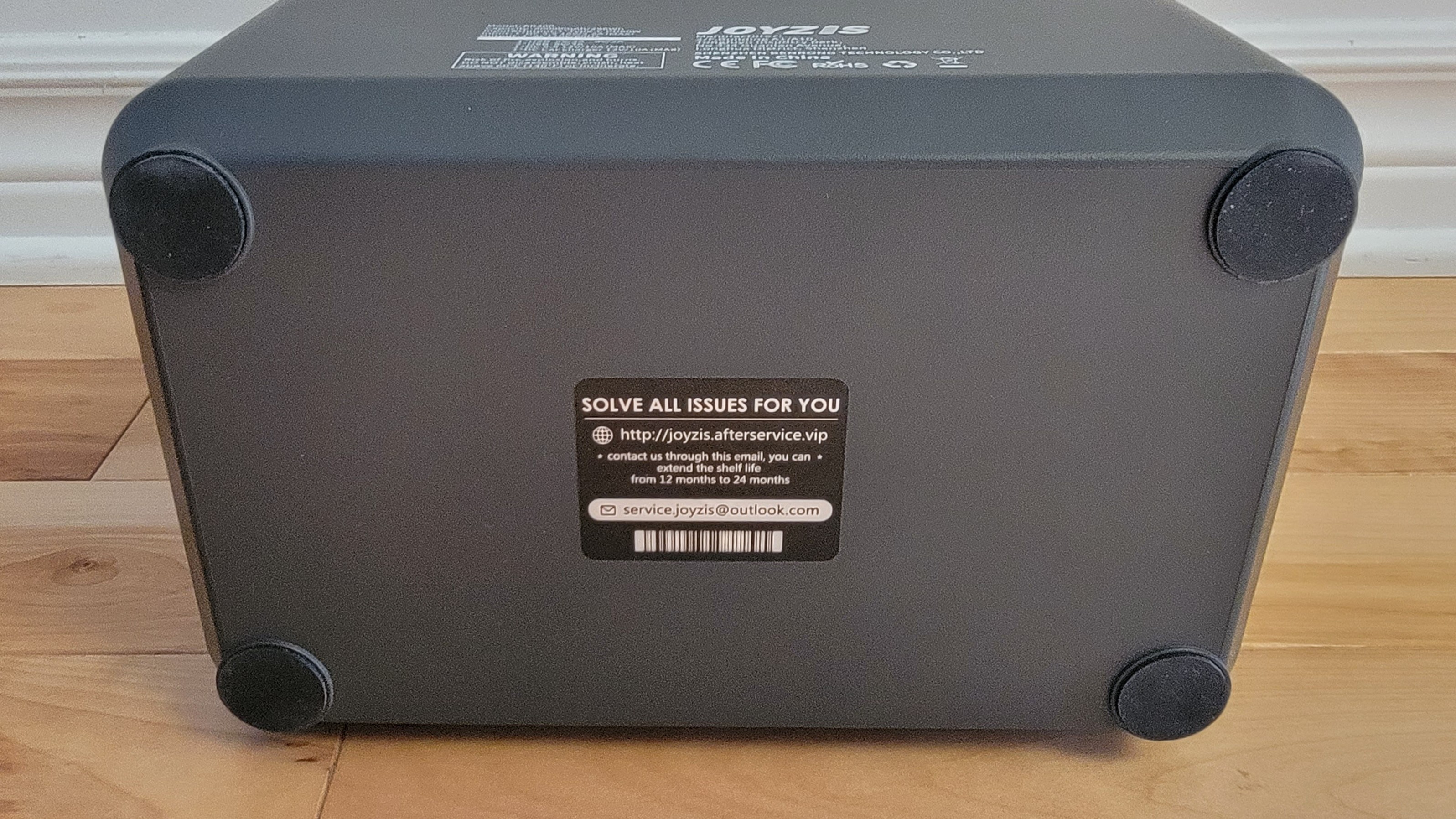
In use
A short press on the power button is sufficient to turn the BR300 on with four battery level LEDs showing the current charge. The LEDs do not turn off after some time even if nothing is connected. This results in the slow drain of the battery. The power button turns on the low-voltage section that includes the USB sockets and the 12V barrel output. The plastic button feels cheap and can get stuck while being pressed.
The USB Type-C is an always-on socket and will power any device even if the BR300 is off. The user can also charge the unit through the same connector. While this is the most convenient and fastest way and provides 60W of input power, charging can also be done through the DC-IN socket. Using both won’t speed things though as the DC-IN takes precedence when both sockets are used. It takes about six hours to fully charge the BR300 using the Type-C input.
The 10W wireless charging port is enabled by pressing the Wireless Charging push button. A green LED embedded in the charging surface lights up as a result. Placing a compatible device on the surface will automatically start the process, blinking the green LED.
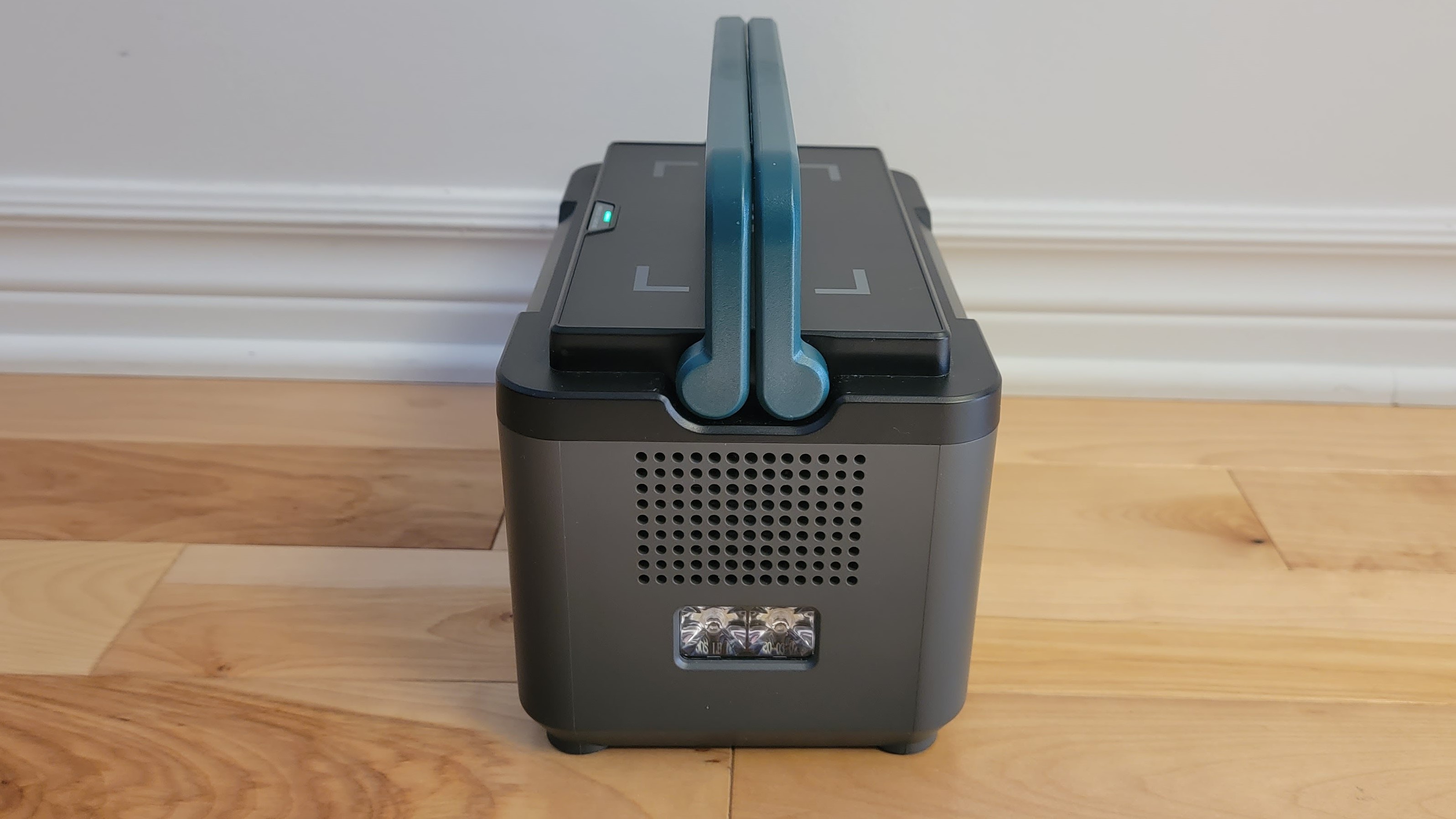
The power station has two LED flashlights located on the left and right side. The one on the left has a filter to diffuse the light with an output similar to a spotlight. The right-side consists of two LEDs covered with plastic lenses producing a more focused beam. This multifunction flashlight can change mode by pressing on its push button, offering the choice between normal and SOS.
The BR300 supports a limited version of the UPS mode which works only with the DC outputs. The unit can be charged while it is powering devices through the USB ports or 12V ports. In addition, the station does not support the MTTP mode thus decreasing the charging efficiency when using solar panels.
The competition
Smaller sized power stations are handy around the house or when going on a trip. They are very simple to use and pack the most useful features in a small volume.
Jackery offers a product similar to the BR300 in the form of the Explorer 300. Both are based on the same battery technology and offer similar capacity for the AC inverter and battery. The BR300 has more DC outputs with seven compared to three for the Explorer 300. The BR300 is also cheaper than the Jackery while wireless charging isn’t something included in the Explorer 300.
The NinjaBatt SGR-PPS300-5 has similar characteristics compared to the BR300 but is more expensive and does not have the wireless charging feature. The PPS300 also lacks the ability to charge the station through the Type-C socket. This means the user will need to carry an extra charger for the station, in case a Type-C adapter is already available.
Final verdict
The Joyzis BR300 is a small power station that packs a punch. With a little less than 300Wh of battery capacity and a 300W AC inverter, it is more than enough for everyday use. The BR300 has no problem powering small to medium appliances such as a mini-fridge or TV for a couple of hours. In fact, it will happily power any gadget thanks to the abundance of low voltage sockets.
The BR300 is also modern and supports wireless charging. If that’s not quick enough, the user can still charge through the 60W USB Type-C connector. The main advantage of the BR300 remains its simplicity. The owner gets information on LEDs which renders it truly universal. The price puts it under the bar of one dollar per Watt. The main disadvantage remains the older battery chemistry that gives fewer charge cycles and the quality of the plastic which could be better.
We've also highlighted the best portable power stations and the best portable laptop battery chargers
0 comments:
Post a Comment